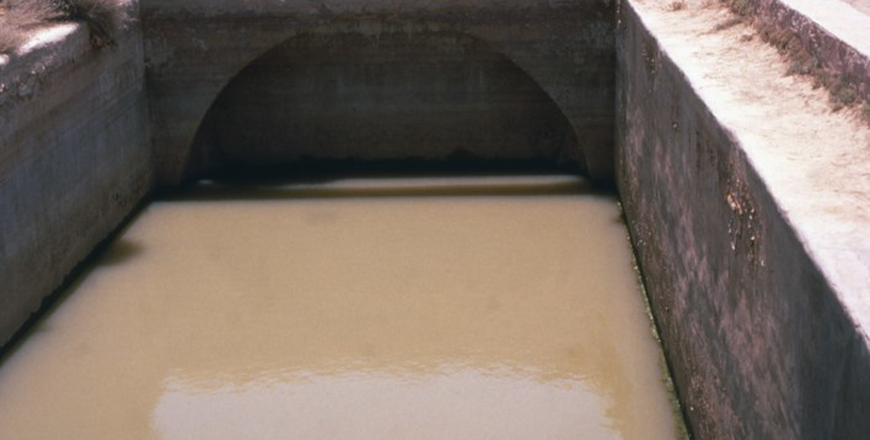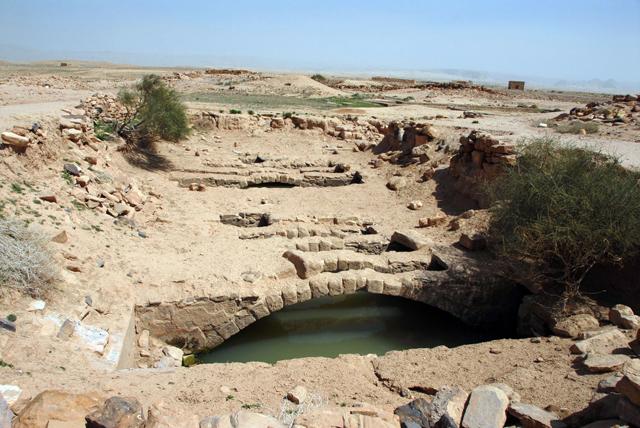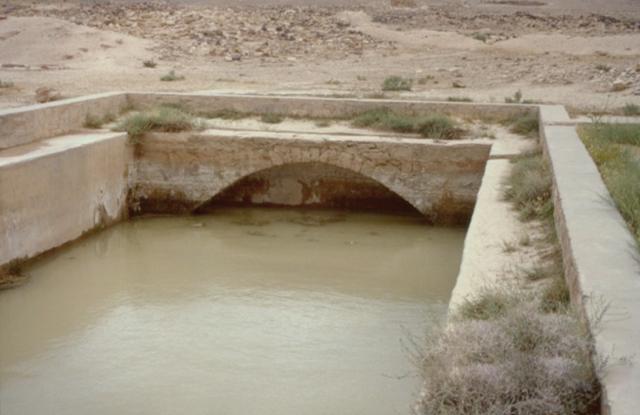You are here
Where Roman military meets Parthian tactics: Studying ingenious design of Awara
By Saeb Rawashdeh - May 15,2024 - Last updated at May 15,2024

The Roman bath inside the military camp built during the reign on Emperor Trajan (Photo courtesy of ACOR)
AMMAN — The Awara Roman fort, located in the south of Petra, has the proportions and internal layout of a typical principate “playing card” fort, but the architect abandoned the usual rounded corners and inward-projecting towers for projecting corner towers, supplemented by towers along the walls that project only on the exterior. This fortress played an important role in the early 2nd century AD when the Roman Emperor Trajan (98AD–117AD) expanded the empire to southern Levant.
Trajan planned the occupation of Parthia and his engineers might have experimented with the urban design of sites like Hawara. Such a design has a defensive posture: Enfilading fire, better access from the wall walk and free passage on the wall walk across the back of the tower, noted the Canadian scholar, John Oleson.
During the 2nd century AD, the Roman military tended to adopt some aspects of Parthian warfare, like archery, which was one of the trademarks of Parthians. Therefore, the Roman military paid the importance to troops armed with the bow — both mounted and on foot — with the adoption of projecting towers in Parthian fortifications.
According to Oleson, during the 1st century AD the Parthians adopted tactics involving mounted sagittarii (archers) along with defensive rather than offensive manoeuvres, and these developments fostered the use of towers facilitating the deployment of archers in Parthian fortifications.
“Roman campaigns against the Parthians subsequently fostered similar changes in the design of Roman camps and forts in the third and fourth centuries. Like Gregory, however, Pietsch overlooks the early date of the Ḥawara fort design, and there is no reason that the process could not have begun earlier in the second century, particularly since Trajan was preparing to invade Parthian territory,” Oleson elaborated.
The detachment of the Legio III Cyrenaica stationed at Hegra (modern Saudi Arabia) in the mid-2nd century, probably sent from or via Awara, added to the Nabataean fort at that site towers that project six Roman feet, just like those at awara. The Hegra Fort was abandoned by its troops in the late third century, just as Oleson proposed for awara, and it subsequently seems to have been re-occupied by civilians.
Hegra and Hawara were both part of southern flank of Limes Arabicus, a frontier towards Parthians/Sassanid Empire and local raiders.
Another atypical aspect of the Ḥawara fort is the presence of a titulum outside the north gate, a curved earthen defensive wall, barely visible to the naked eye.
“The question of roofing is important for the reconstruction of the main structures inside the Ḥawara fort. The three storerooms of the horreum [warehouse] preserve arch support imposts and fallen voussoirs [wedge-shaped element of arches] for cross arches that carried flat roofing slabs. The same arrangement is seen in the barracks,” Oleson underlined, adding that the walls of the principia, in contrast, have no arch support piers, suggesting that this structure may have had pitched roofs covered with roof tiles.
Nevertheless, it is clear that the Roman engineers in this region routinely laid out their military structures according to pre-set proportions, Oleson explained, adding that despite its auxiliary status, the Ḥawara fort had many of the features and structures of a legionary camp or fort: four gates, with the via principalis and via praetoria crossing at 90 degrees; a principia, or headquarters building with parade ground in front; a praetorium, or commander’s residence; a horreum, or granary; a barracks building; a possible craft area with latrine (Area N); and a probable stable.
“The advanced fortification technique and the careful modular planning of all the structures, along with their comprehensive variety, reflects the importance Trajan and his engineers placed on this isolated frontier post,” Oleson underscored.
Related Articles
AMMAN – Roman political power was present in the region in the 1st century BC, but the annexation of the Nabataean Kingdom by the Roman Empi
AMMAN — Despite no “direct literary sources”, a Canadian scholar is piecing together archaeological clues to the origins of the ancient sett
AMMAN — Due to the extremely dry environment of the Hisma Desert in Southern Jordan, ancient Nabataeans used to collect water for their sett














